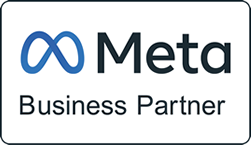Digital marketing is one of the fastest growing in-demand skills for 2024, ranking in Coursera’sCOUR -0.8% top 10 list in their Job Skills Of 2024 report. The report unveiled that professions within digital marketing, which is set to witness a 6% increase in growth—higher than the average job growth rate—by 2032, are steadily on the rise and will be fueled by the emergence of new marketing technologies, such as AI-powered insights and content generation tools. It’s a sign that AI will not render jobs in this industry obsolete but complement them. The report also noted that the industry will be worth $1.5 trillion by the year 2030.
The digital marketing industry is strongly spurred on by consumer trends, particularly on social media, with an estimated 76% of consumers browsing and purchasing items via social media. In fact, in 2023 alone, there were approximately 4.89 billion social media users worldwide, with LinkedInLNKD 0.0% holding more than one billion of that total figure. As the Coursera report notes, this calls for organizations to upskill their teams in a new and advanced skill set—social selling. This is pivotal to organizational success.
What Is Social Selling?
LinkedIn released a report titled 15 Big Ideas Of 2024, in which one of its most noteworthy insights revealed that social media is of such business importance, that influencer marketing will be one of the new degrees offered by universities in the coming years. In fact, Southeast Technical University has been one of the first to have already launched a content creation and social media business degree for 2024, and has already started accepting applications.
Given the traction and attention that social media is having in the business world in advancing success, what relevance does social selling have for leaders and managers?
Software updates are necessary to keep computers, mobile devices and tablets running smoothly — and they may lower security vulnerabilities.
Data breaches, hacks, cyber attacks and identity theft have all been in the news. One of the biggest cybersecurity attacks targeted SolarWinds, a company that provides monitoring and management tools for networks and infrastructures. The 2019-2020 attack sent a wave of malicious software to organizations using Solar Winds’ Orion network IT management system. Threat actors used the hack to gain access and monitor security from large government organizations — such as Homeland Security — and private organizations such as Microsoft, Intel, Deloitte and Cisco.
Here are some reasons to consider software updates as soon as possible.
1. Patch security flaws
Security is the No. 1 reason to update software immediately. Software vulnerabilities enable cybercriminals to access a person’s computer. Threat actors see these vulnerabilities as open doors, enabling them to plant malware on people’s systems.
Malware enables threat actors to take control of computers and steal information. Malware can also encrypt files, documents and other programs so they are unusable. Security patches block these open doors in the software to protect a device from attacks.
People sharing a network with others need to be extra diligent. An infected device can unknowingly spread malware to others in a network, including colleagues, friends and family.
With each software update, consider updating passwords for another level of protection. For example, the Colonial Pipeline hack in 2021 was the result of a stolen VPN password.
2. Get new features
Installing updates may add new features and remove old ones that are no longer necessary. Technology is constantly changing, and updates offer the latest features and improvements.
For example, recent Zoom updates include features to create a central library for polls, hide or display chat notifications, view breakout room activities after main sessions, and integration with Box and SharePoint for Windows users.
3. Protect data
If a threat actor gets in through a software security flaw, they will search for personal data.
If a threat actor gets in through a software security flaw, they will search for personal data such as financial information, passwords, usernames or other documents with sensitive information.
Threat actors access personal accounts and sell sensitive information on the dark web. Updating software to improve security vulnerabilities enables data to be better protected.
4. Improve performance
Not all patches are security related. Software vendors may find bugs in a program or need to make necessary enhancements to a program. These patches help improve the performance of the software.
Electronic devices also need regular maintenance and routine updates to run their best. Having the latest patches can help prevent software from crashing.
5. Ensure compatibility
Software manufacturers send updates to ensure their software is compatible with the latest technology. Without updates, older software may not be able to work with newer technology.
For example, a recent Microsoft Windows update included additional ways to customize the computer display and increased capability to work across multiple devices — such as syncing to an Android phone. Users of Microsoft products can also chat with other users even if they’re using Mac, iOS or Android.
Beware of fake update messages
Don’t fall victim to fake update messages. These messages are another way threat actors try to access computers and mobile devices.
Messages can appear to users in the following ways.
- Pop-ups. They may look real but clicking on a pop-up may lead to a hack. If you see these pop-ups, close them and go directly to the vendor website to look for downloads. Updates should also appear on the software’s website, app store or within the program.
- Emails.The email may state that an update is long overdue. It may even have the company logo with all the correct spelling in the text. Don’t click on links or respond to these types of emails. For information about updates, it’s best to contact the software’s support desk or check the vendor website.
One of the best ways to avoid malware downloads is to let the software automatically update. Many OSes and other software have an option to automatically run updates when available.
And don’t forget updates to mobile devices and tablets. Check for software update notices in the settings.
Leaders need to realize that both they and their teams are advocates for the business and as such should encourage and train their employees to develop personal branding and social selling skills. This will not only help with improving the company’s image, but will contribute to their employees’ career development for the long-term.
And for those who are seeking a new job, being conscious of and protecting one’s social media image is essential to being taken seriously by a prospective employer or client.
How To Build Social Media Marketing Skills
There are several elements of social selling that ensure credibility and long-term success, which literally anyone can adopt regardless of being involved in marketing or not, including:
1. Establishing A Presence
Create a compelling profile across relevant social media platforms. Remember to engage with your followers and connections through consistently adding value relevant to your industry. The focus is not to sell most of the time or even half of the time, but to engage and share insights so your connections want to learn more. This is especially relevant on LinkedIn, where you can more freely talk about your job, business, or employer, discuss latest industry trends, and showcase your products and services.
Consistently maintain an image of being an invaluable resource, rather than pushing for a sale immediately after someone confirms your connection request or starts following you. Position yourself to offer tips and advice, and be a point of contact to refer them to others if necessary.
Always remember that you represent the company you work for or industry you are associated with, and that, should you become unemployed, employers may run a background check or conduct research about you via your social media profiles. Therefore, always think before you interact with others, think before you post, and if it’s something personal, restrict your profile or adjust your content settings so it’s not visible to anyone who randomly pulls up your name on Google
2. Developing Social Listening Skills
Social listening entails being aware of the analytics behind engagement across your various profiles, adapting to the voice of the customer, checking for relevant brand mentions or even competitor mentions, and staying relevant on trends that could affect your company or industry. These insights can be used to inform sales and partnership strategies, and if you’re not directly involved in leadership or have management responsibility, you can make recommendations or suggestions based on your observations.
3. Building Relationships
Establish relationships with your social media connections both online, and taking it a step further, offline. Engage with posts, converse through direct messages, and offer to meet for business lunch or a coffee chat if they are in or near your location. Taking interactions off social media and into meetings or emails helps to solidify connections and makes for valuable additions to your network, which you can use as a unique selling point if applying for a job in the future.
4. Undertaking A Google Career Certificate
Now, if you’re really serious about entering the digital marketing and social media industry, you should consider undertaking training through short courses or even getting a degree in this field. Google offers a career certificate called Digital Marketing and E-commerce Professional Certificate, and it is available via Coursera for free depending on your financial circumstances.
This is a great way to get your foot in the door and gain skills via a learning pathway from a widely recognized institution. There are plenty of other digital marketing courses you can check out, but this is one of the most popular ones.
So, while the demand is high and the marketing industry is expanding, now is the time for organizations to train and encourage their employees to be social media advocates for their company brand, and for professionals to individually establish their social selling presence so they can pave the way for more robust careers.










